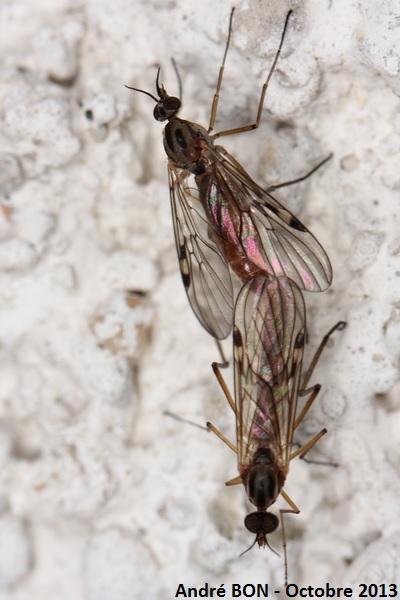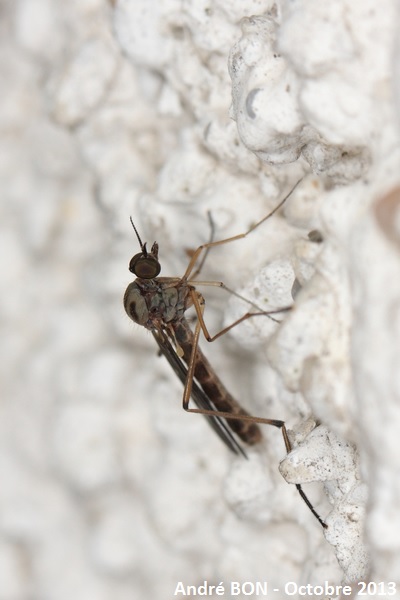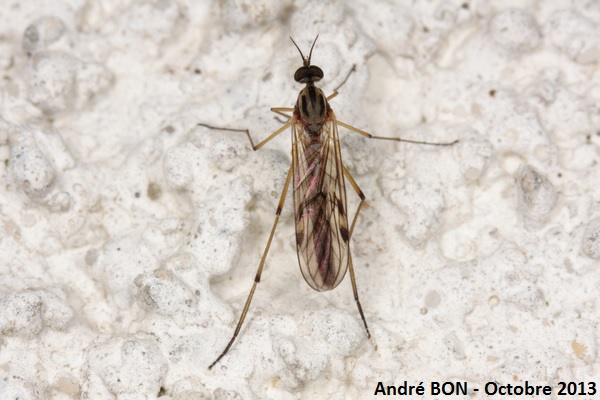


| Sylvicola fuscatus (Fabricius, 1775) |



|
|
Scientific name: Sylvicola fuscatus (Fabricius, 1775) Common name: French name: Order: Diptera Family: Anisopodidae Wingspan : 6-10 mm (4.5 to 5.5 mm for the body). Biotope: The larvae grow in rotting vegetation. Sylvicola fuscatus is attracted to light. Geographic area: Europe, (North America?) Observation period : All year round. |
Sylvicola fuscatus has a reddish brown to greyish body. The thorax, which is covered by some long yellow hairs, shows three black longitudinal stripes. The one in the centre, a little shorter, has a pointed tip at the rear. The wings show a pterostigma which is yellow in the centre and bordered with dark brown on each side. The M1 and M2 veins start from a single point of the discal cell (or from two very close points giving a very short base length on the m1 cell, this length being clearly much lower than the base length on the m2 cell). There is no dark spot at the tip of the wing. The legs are yellowish. The median and the hind legs show black rings. There is no dark spot below the stigma close to the place where R1 reaches the costal edge. Sylvicola punctatus shows a dark spot which can extend to r4+5 at the middle of the wing. There are several very similar species including Sylvicola fuscatoides and Sylvicola stackelbergi. Female Sylvicola fuscatoides have a broad basal half of the antennae. The first articles are 3 to 4 times broader than those of the tip. They are only 2 times broader on Sylvicola fuscatus. An exam of the male genitalia is required to separate Sylvicola fuscatus and Sylvicola stackelbergi. |
| [To know more about the Sylvicola fuscatus] [Next picture] [Top] |

|
I have observed many diptera of the Sylvicola genus on the northern wall of the house. This view is the better one to show the maximum of identification criteria. The wings with no dark spot at the tip nor near the stigma, and with also veins M1 and M2 starting from a single point, lead to the Sylvicola fuscatus, Sylvicola fuscatoides or Sylvicola stackelbergi species. The basal half of the antennae does not seem to be very broad. This is enough to discard the Sylvicola fuscatoides species. So we have got here Sylvicola fuscatus or Sylvicola stackelbergi. |
| [To know more about the Sylvicola fuscatus] [Next picture] [Previous picture] [Top] |

|
Side view. |
| [To know more about the Sylvicola fuscatus] [Previous picture] [Top] |

|
Upper side view. It is not easy to clearly see the veins and the eventual dark spots when the wings are held one over the other. However I think that this one is Sylvicola fuscatus or Sylvicola stackelbergi. |